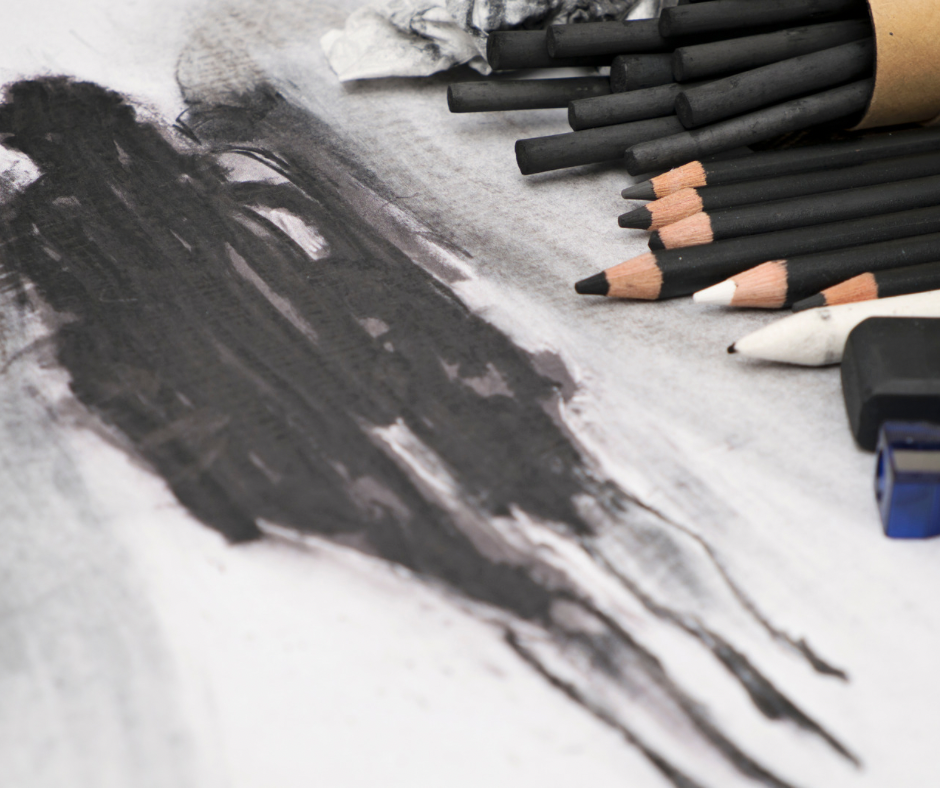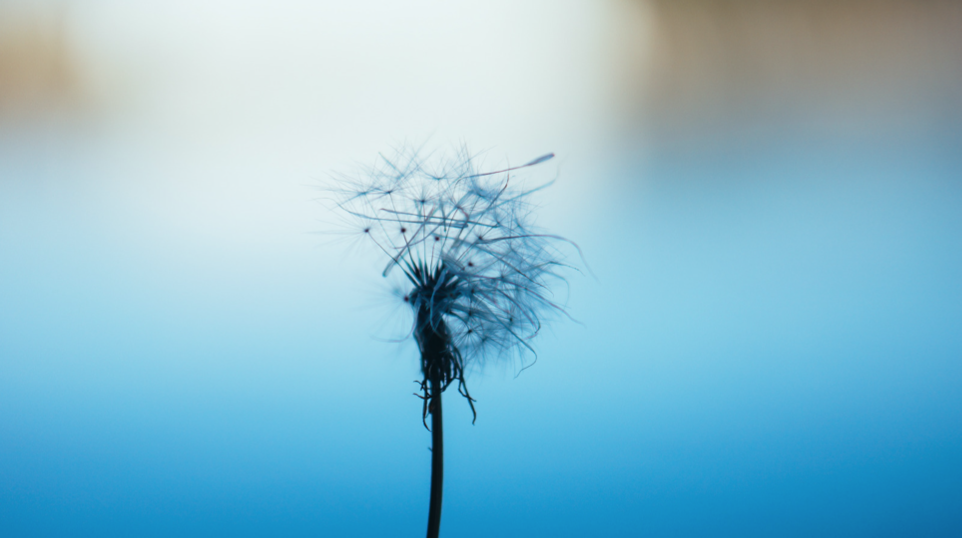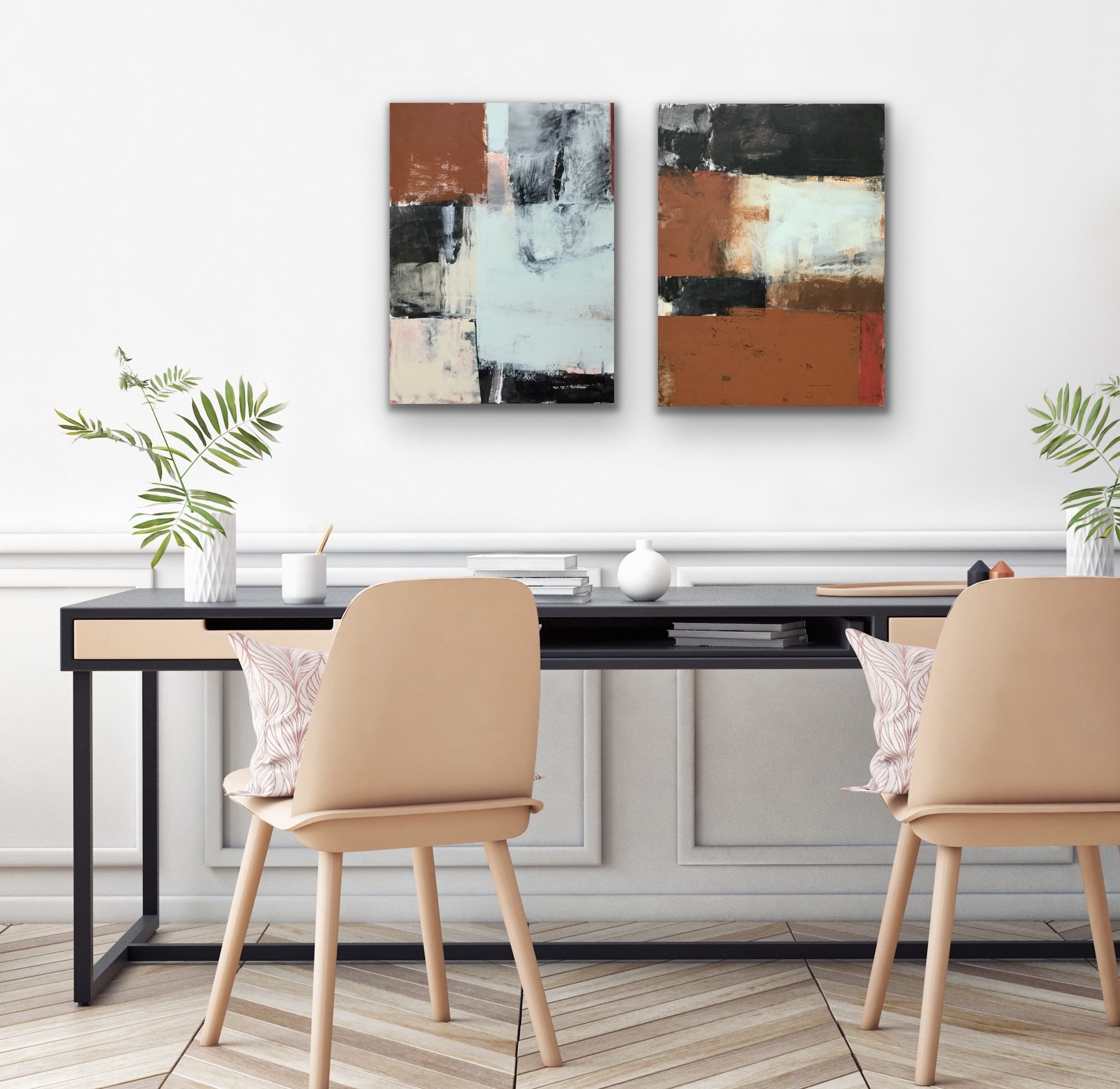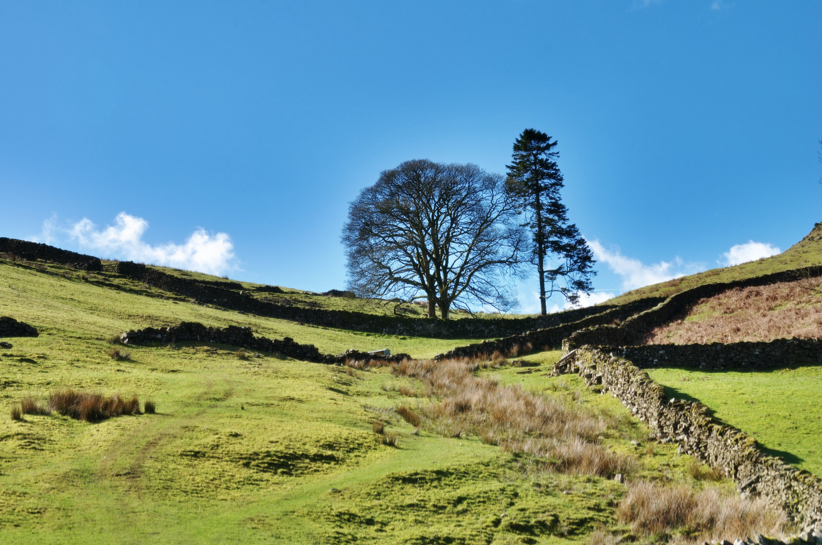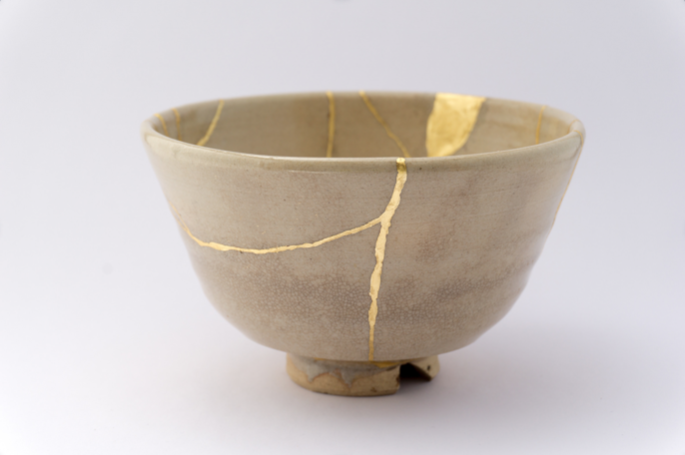This question of “who am I creating my work for?” is one that arrives for me often, and for many of the artists I work with. It’s an important one, and one that guides us towards our truth, our courage, and our vision as artists.
Many of us make art because it is an innate need – something we’ve always done, or know that we have to do. And for some there is a keen desire to share the work they have made; it completes the creative cycle when the work is experienced and witnessed. It has a relationship with the viewer, one that the artist is interested in connecting with and cultivating.
There are also many artists who chose to make their living through art sales, which helps sustain their practice, pay the studio rent, and support themselves. This is often a challenging path for artists, and in many ways can muddy things for us if we’re not careful. The focus on generating sales can shift our consideration more towards the audience for our work, than staying true to our vision.
Essentially this is when the question, “Who am I making my art for?” really comes into focus and asks us to consider the relationship we have to our audience, and to ourselves. It’s a tricky question to answer so let me expand on that a bit further.
I recently came across this passage of writing by Jeff Brown from his latest book ‘Hearticulations.’
“People pleasing is a self protective pattern. If we keep them happy, they won’t turn on us. But it comes at a terribly high price. Because in our fixation with keeping others happy, we undermine our own happiness. In our desire to placate others, we deny ourselves. Perhaps it is time for a new way: Please others, when it truly pleases you.”
When I read this I felt the truth in these words. I’ve been a people pleaser most of my life...avoiding disappointing others, looking for ways I could be different so as not to upset people, including limiting my own light from shining. I resolved to not take or ask for too much. I tried to not be too much or to shine too much. I didn’t want others to feel challenged by that and push back at me in some way. The confusion I was caught up in caused me to make some seriously unhealthy choices and to give far too much away.
In trying to be liked by everyone the result was I had no idea who I really was – what did I think, feel, believe? I derived my sense of self through how others saw me, and whether they accepted me. If they didn’t like me, that was the evidence that proved I was flawed and that I should try harder to be better, more, or different in some way. This is a form of self-abandonment and leads to a loss of connection – to ourselves and our creative work. We trade our truth for acceptance, which is based on something that isn't truthful at all but about self-preservation. It’s an illusion to think we can be liked by everyone, always accepted and never judged. It’s often impossible to avoid disappointing others by our actions or choices.
This part of my nature is something I have always struggled with, and continually work with. I still hold a frayed thread of connection to the belief that my truth and my needs are too much for others...so asking for support or help is still my growing edge. I’m much happier in the helper role, and always have been. Thankfully, over the years I have recognized this aspect of my personality and have been able to learn that I can reach out, and that while my purpose is to serve and support others, I am better at that when I allow myself to receive.
Art-making became a powerful vehicle for my understanding of this relationship I have with people pleasing. In my pursuit of making authentic work that felt truthful and personal, I had to reveal myself to others. Each time I would see my truth arriving in my work, I would also feel fear arriving in equal measure. The fear was about allowing myself to be seen...and if I could muster the courage to show my truth, how would it be received.
There came a time when this inner conflict between desperately wanting to make work that felt “right” for me, and making work that would be accepted into shows, galleries and collections, was so painful that I almost quit. I felt it was impossible to bridge that gap and enduring the unending inner conflict was too high a price to pay for my art.
But in that moment art was saving me. It was reflecting back to me my inner state – my thoughts, fears, habits, desires, and my inability to prioritize my own needs. I wanted to make my paintings, but my concern for making the work for others, and the external mechanisms that decide value, was crippling. It affected my ability to connect with my truth, to show up fully in the work, to ask the tough questions and declare something I made as good. I had to come to terms with this aspect of my personality or I could never make the art I knew I wanted to make.
Art is like a mirror, always showing you who you are as you engage with it – both as a creator of the work and as a viewer. If we arrive at the canvas or page with a myriad of thoughts and concerns about how our work will be received, if it has value, or if we can sell our work, those preoccupations and concerns will be reflected in the work through our choices and ability to connect. In this way art reveals who we are to ourselves. If we're willing to look at this with compassion and curiosity, then our art will guide us forward towards our truth.
But how do we stop this cycle of concerning ourselves with how our work will be received, develop strong work and put it out into the world for others to consider? What allows us to maintain some separation between the work itself and the sharing of it?
I believe this begins with our relationship to ourselves. Most artists feel their work is an extension of themselves. They see it as coming from them, through them, and that it says something about them or their choices. It’s difficult to separate ourselves from our art, and why would we want to? If anything, we want more connection to our art, more truthful expression to come through. But, if we find ourselves second guessing every move we make, trying to determine validity and sales value as we are making the work, we won’t find the connection we’re seeking; ultimately the work won’t be as strong as it could.
We need to cultivate a quality of space within ourselves that reflects the quality we want in our work. If we want our work to be bold and expressive, then we need to embody boldness and courage. We need to allow ourselves to risk and push at the perceived boundaries to discover something really juicy and alive.
If we want our work to feel contemplative, refined, quiet and nuanced, then we also need to cultivate an inner space that reflects those same qualities. We can’t make quiet, meditative work if inside we’re swirling with self-criticism, as we anxiously look to see if what we’ve made is good enough.
We need to make our work for ourselves, firstly and wholeheartedly. And to do that we need to be mindful of our inner space – the space that the work comes from. Taking the time to heal our relationship with ourselves, through cultivating mindfulness, self-compassion, and radical self-acceptance will reward us with a receptive inner space to make our work from. The result will be work that feels truthful and connected – work that you feel good about and even love.
It is from this space – that solid ground – that you then offer your work to the world. When we have a strong foothold in this place with our art-making, we are not hijacked by any feedback we may receive. If we’re clear on our own relationship to the work, then we can become very discerning about what is reflected back to us from the external world in the form of opportunities, sales, and critiques. When we receive feedback, we recognize it as information and weigh it against the internal connection we have with our work. This way, valuable feedback – either positive or negative – doesn’t cause us to go off course, but helps refine our direction. We get to choose what to let in and why.
This is how we stay solid in our art-making while simultaneously building opportunities to show and sell our work. When we attend to our inner space – our relationship to ourselves – and nurture a strong and healthy mindset, we have what it takes to navigate both these places. We can then find quality in both our art-making experience and the external influences that we will inevitably encounter.
By simply reminding ourselves, “who am I creating for?” we can reconnect with the most important critic to please – ourselves. And, when we have a healthy relationship to that inner critic, we can guide our work forward, take greater risks, honour our true voice, and paint with passion and freedom.
As the artist Georgia O’Keefe said, “I have already settled it for myself so flattery and criticism go down the same drain and I am quite free.”
Perhaps today is a good day to ask yourself how you can free yourself from the burden of pleasing others, and just please yourself. Your art will thank you for it.
Prefer to listen? Click on the link below to listen to and/or download the audio version of this Blog post.





